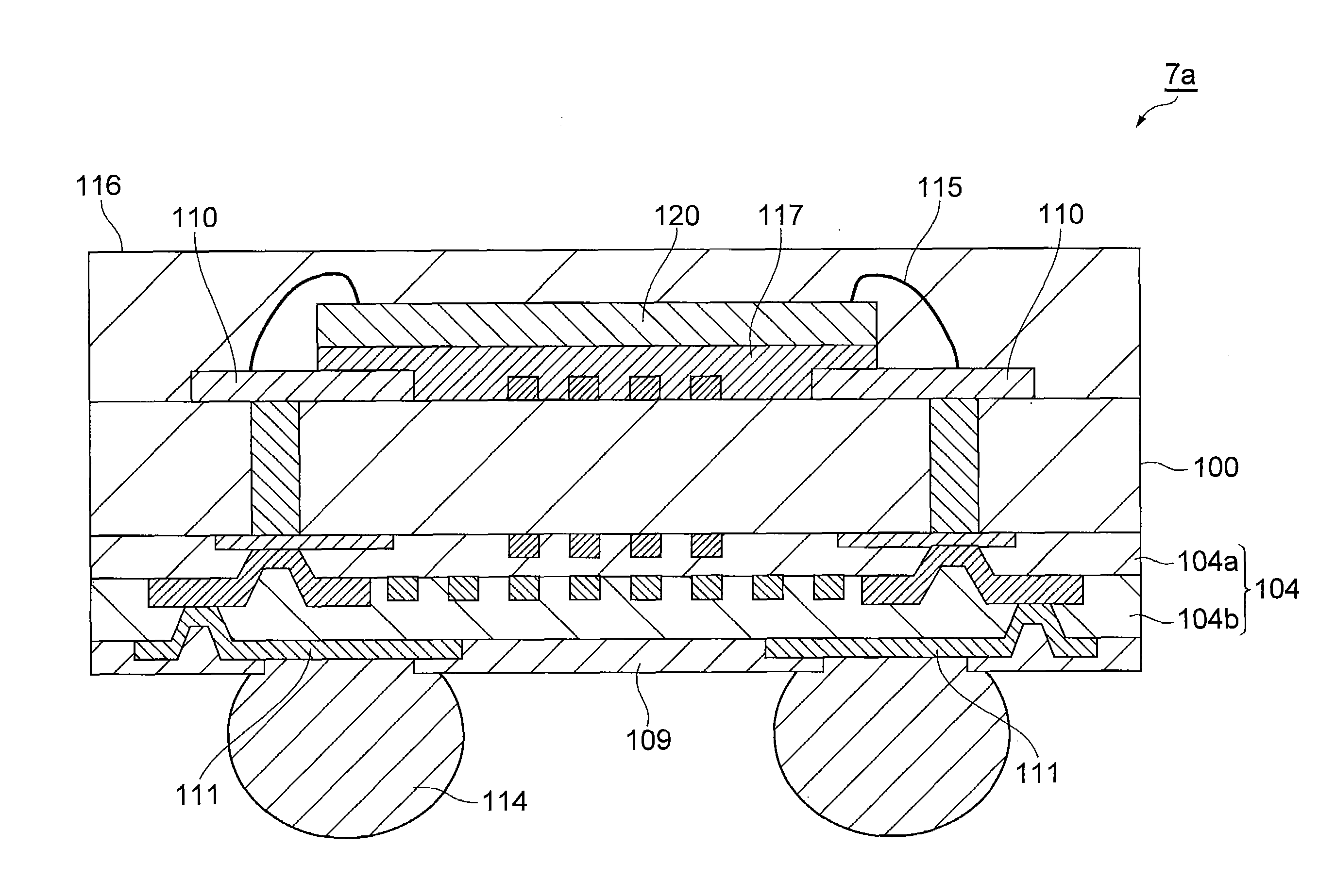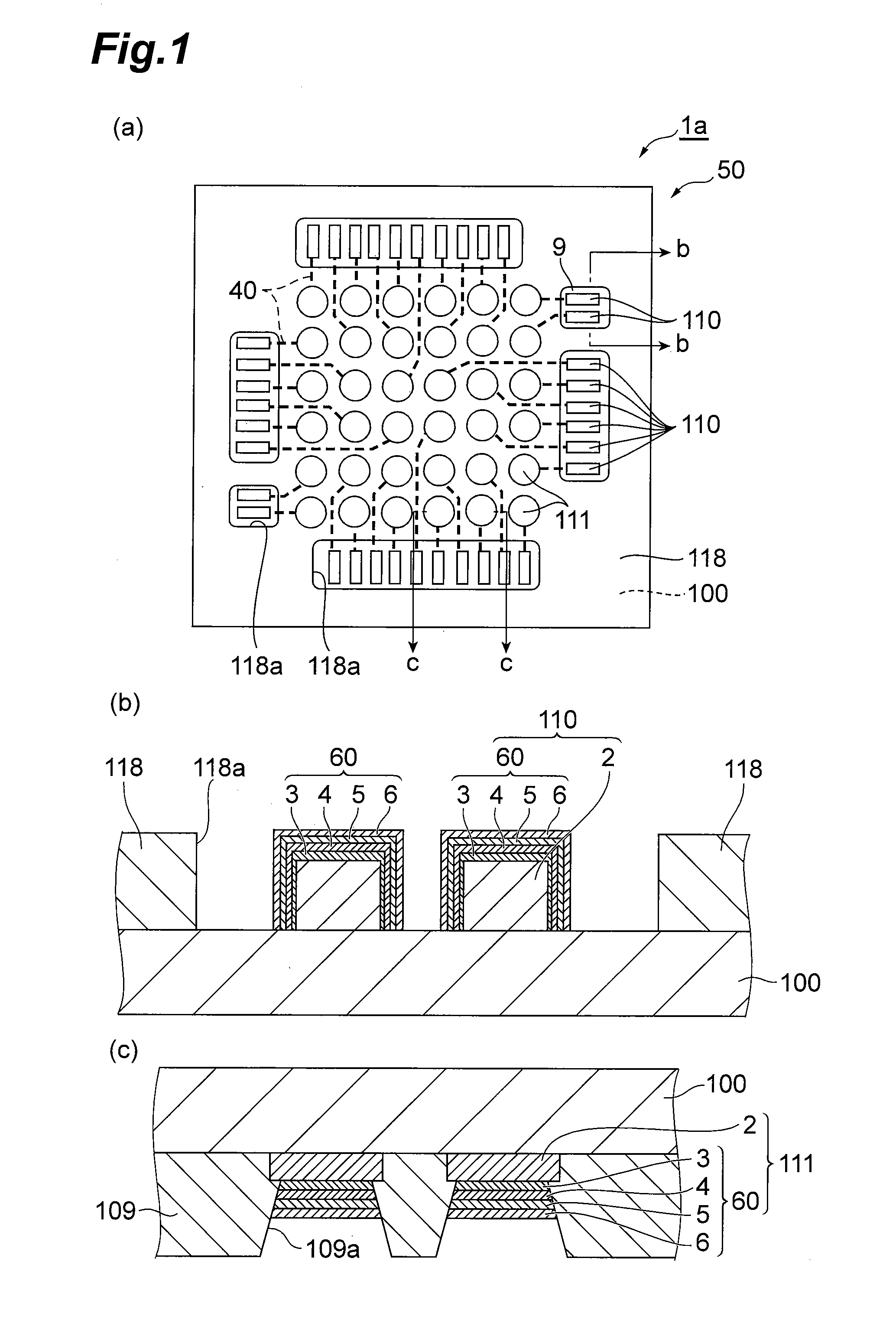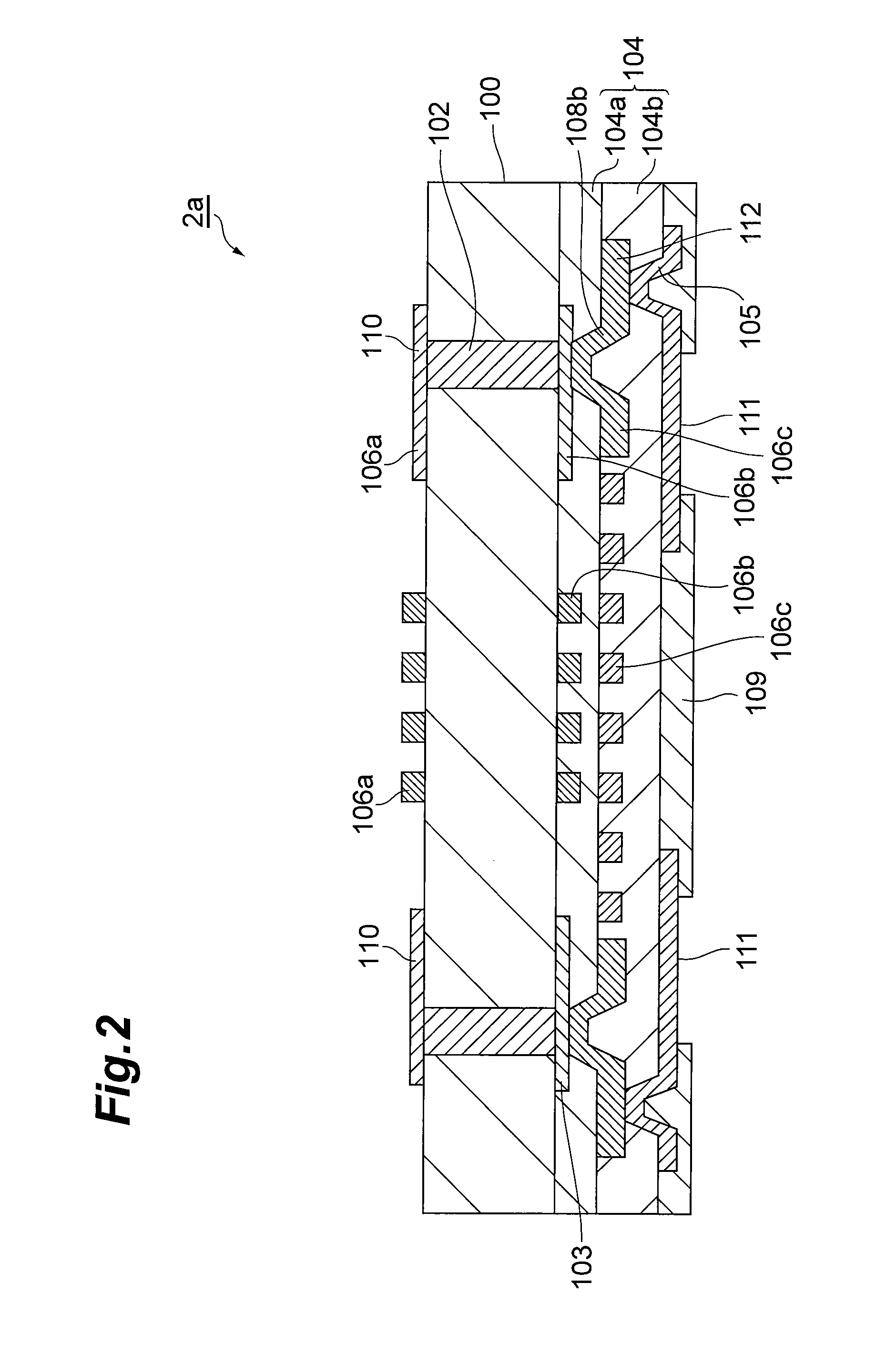Connecting terminal, semiconductor package using connecting terminal and method for manufacturing semiconductor package
- Summary
- Abstract
- Description
- Claims
- Application Information
AI Technical Summary
Benefits of technology
Problems solved by technology
Method used
Image
Examples
example 1
[0177]The following steps were carried out to fabricate a semiconductor chip mounting board having the same construction as the embodiment shown in FIG. 2, according to the manufacturing method embodiment shown in FIG. 6.
[0178](Step a: Formation of First Wiring)
A 0.4 mm-thick soda glass board (thermal expansion coefficient: 11 ppm / ° C.) was prepared as the core board 100, and a 200 nm copper thin-film was formed on one side thereof by sputtering (hereinafter this will be referred to as the “first main side”). The sputtering was carried out using a sputtering apparatus (MLH-6315, product of ULVAC Corp.) under the following conditions 1. In addition, a copper plating layer with a film thickness of 10 μm was formed by electrolytic copper plating on the copper thin-film. An etching resist was then formed to cover the sections of the copper plating layer which were to constitute the wiring, and a ferric chloride etching solution was used for etching to form first wiring 106a (including t...
example 2
[0204]Each step was carried out in the same manner as Example 1, except that step m of Example 1 was omitted. The results are shown in Table 1.
examples 3-8
[0205]The immersion treatment time for structure 6g-j and / or structure 6g-k in step j and / or step k of Example 1 was changed as shown in Table 1, to form electroless palladium plating films with different film thicknesses on the connecting terminals and wiring of structure 6g-j and the connecting terminals and wiring of wiring structure 6g-k. The other steps were carried out in the same manner as Example 1. The results are shown in Table 1.
PUM
| Property | Measurement | Unit |
|---|---|---|
| Percent by mass | aaaaa | aaaaa |
| Percent by mass | aaaaa | aaaaa |
| Percent by mass | aaaaa | aaaaa |
Abstract
Description
Claims
Application Information
 Login to View More
Login to View More - R&D
- Intellectual Property
- Life Sciences
- Materials
- Tech Scout
- Unparalleled Data Quality
- Higher Quality Content
- 60% Fewer Hallucinations
Browse by: Latest US Patents, China's latest patents, Technical Efficacy Thesaurus, Application Domain, Technology Topic, Popular Technical Reports.
© 2025 PatSnap. All rights reserved.Legal|Privacy policy|Modern Slavery Act Transparency Statement|Sitemap|About US| Contact US: help@patsnap.com



